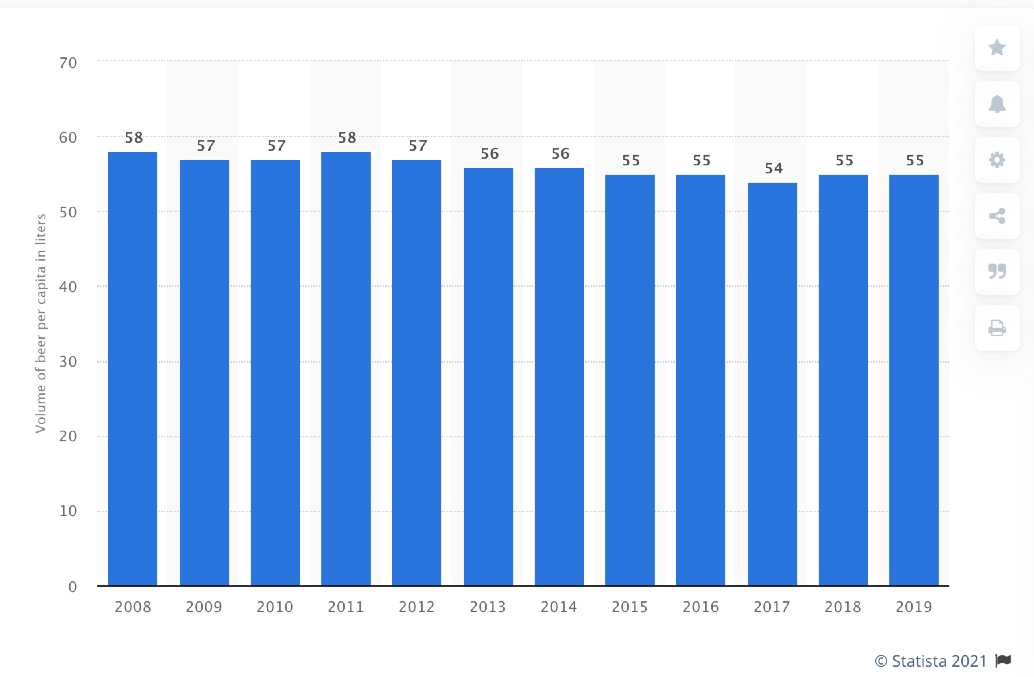Swedish beer fans should be feeling really good about themselves this month as the Systembolaget launches not one but three releases of new beers this Thursday (September 1st).
Following the monopoly’s re-jigging of the way it launches beers over the summer (the more ‘exclusive’ middle-of-the-month releases are now history and have been lumped together with the ‘start-of-the-month’ releases) you’re going to need strong arms and a big wallet if you’re going to take home a bottle of everything coming your way later this week.
That’s because the combined temporary and exclusive launches are coinciding this month with the annual release of Octoberfest beers, bringing the total number of new brews going on sale to a whopping 34!
To avoid an article of ‘War and Peace’ proportions I’ll break the beers down into their respective releases:
Temporary Release September 1st (Autumn release):
Falcon Pilsener (SB nr 11606-03) Sweden 12,90 SEK
Mohawk Rye Lager (SB nr 95370-01) Sweden 26,90 SEK
Sigtuna Dunkel Lager (SB nr 11236-03) Sweden 17,90 SEK
Dugges Höstbrygd (SB nr 11703-01) Sweden 27,50 SEK
Beer Here HöstCitra (SB nr 11733-01) Danmark 37,50 SEK
Sigtuna Höstporter (SB nr 11806-01) Sweden 24,90 SEK
Beer Here HöstStout (SB nr 11803-01) Denmark 37,50 SEK
S:t Eriks Rauköl (SB nr 11705-03) Sweden 23,90 SEK
The Beer Here HöstCitra is a name-change for Danish brewer Christian Skovdal Andersen’s risqué Karma Citra brown ale. Check out the details – if you dare!
Similarly Beer Here HöstStout is a re-working of its Ammestout, a sweet porter whose original label (depicting a mother swigging beer out of a bottle while breast-feeding) would have been disqualified faster than Usain Bolt at the Systembolaget.
Octoberfest Beers (availability will vary):
Flying Dog Dogtoberfest Märzen (SB nr 11231) USA 355 ml 25,90 SEK
Herslev Bryghus Oktober Bock (SB nr 11229) Denmark 500 ml 39,90 SEK
Hofbräu Oktoberfestbier (SB nr 11298) Germany 500 ml 19,90 SEK
Kaltenberg Oktoberfest (SB nr 11278) Sweden 500 ml 18,50 SEK
Löwenbräu Oktoberfestbier (SB nr 11210) Germany 500 ml 19,90 SEK
Oppigårds Oktoberfestbier (SB nr 11238) Sweden 500 ml 25,90 SEK
Paulaner Oktoberfest Bier (SB nr 11250) Germany 500 ml 20,90 SEK
Red October (SB nr 1246) Sweden 330 ml 15,90 SEK
Samuel Adams Octoberfest (SB nr 11261) USA 355 ml 17,90 SEK
Sigtuna Black October (SB nr 11262) Sweden 500 ml 23,90 SEK
Spaten Oktoberfestbier (SB nr 11281) Germant 500 ml 19,90 SEK
Weltenburger Kloster Oktober-Festbier (SB nr 11290) Germany 500 ml 23,10 SEK
I recorded a BeerSwedenTV show last year that features two of these beers (Hofbräu and Samuel Adams) plus gives you a bit of the background behind the world’s biggest beery knees-up.
To be honest Octoberfest beers aren’t my favourite style, tending to be somewhat bland. I tend to either go traditional (only breweries located within the city limits of Munich can truly call their beers Octoberfest beers) or totally the other way and go for beers with a contemporary spin.
Special mentions here for Flying Dog Dogtoberfest Märzen (coolest name of the release), Sigtuna Black October and Oppigårds Oktoberfestbier.
‘Exclusive’ Release September 1st (in around 30 selected stores):
Black Rooster The Hoptimizer IPA (SB nr 11021) Denmark 500 ml 49,90 SEK
Bröderna Andersson´s Brutal Oak Edition (SB nr 1404) Sweden 250 ml 79,90 SEK
Caracole Ambrée (SB nr 11019) Belgium 330 ml 26,90 SEK
Fuller’s Past Masters Double Stout (SB nr 11018) UK 500 ml 34,50 SEK
Hello My Name Is Ingrid (SB nr 11177) UK 330 ml 36,90 SEK
Jai Alai India Pale Ale (SB nr 1596) USA 750 ml 109,00 SEK
Maduro Brown Ale (SB nr 1547) USA 750 ml 99,00 SEK
Nils Oscar Jubileum 15 (SB nr 11022) Sweden 750 ml 99,00 SEK
Nøgne Ø Imperial Brown Ale (SB nr11025) Norway 500 ml 49,90 SEK
Shipyard Smashed Blueberry (SB nr11740) USA 650 ml 69,00 SEK
Saint Amatus (SB nr 1626) Belgium 330 ml 59,90 SEK
Thisted Black Ale (SB nr 11017) Denmark 330 ml 24,90 SEK
Thisted Limfjordsporter (SB nr 11237) Denmark 330 ml 23,10 SEK
Tournay Noire (SB nr 11020) Belgium 330 ml 29,80 SEK
Fuller’s is a given with its retro recreation, as is the Nils Oscar Jubileum 15 (a saison-style anniversary beer) and Nøgne Ø Imperial Brown Ale. Neither can I resist a bottle of Saint Amatus from the acclaimed De Struise Brouwers in Belgium or (checking my wallet) the big bottles from Cigar City (Jai Alai and Maduro).
Which leaves last, but certainly not least, ‘Hello, My Name is Ingrid’, a beer that I helped brew together with cult craft brewery BrewDog.
This Double IPA brewed with Swedish cloudberries sold out in record time when it was first released earlier this year so you’ll need to be quick to get your hands on it this time around.
I’ve recently tasted old and new Ingrid side-by-side and can only echo the words of BrewDog’s founder James Watt when he said: “”The new batch of Ingrid rocks – better than the first”!
Good luck and let me know what the beers which you got your hands on!




 Please whitelist us to continue reading.
Please whitelist us to continue reading.
Member comments